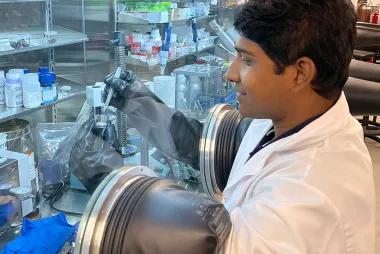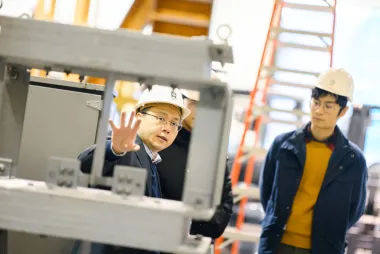Next-gen technology helps high-rises ride out earthquakes

UBC researchers have developed a new structural system that helps high-rise buildings withstand major earthquakes—keeping both the building and its occupants safe.
Led by Dr. Tony Yang, a structural engineering professor in UBC’s Faculty of Applied Science, the research team built a scale model of a typical 30-storey Vancouver high-rise. The model was subjected to intense earthquake simulations at the International Joint Research Laboratory of Earthquake Engineering (ILEE) in Shanghai, one of the few facilities in the world equipped with a “shake table” large enough to test tall buildings.
Researchers tested the structure with over 100 simulated earthquakes of different types and magnitudes, including large-magnitude and long-duration shaking, similar to what might occur in the Cascadia Subduction Zone off the BC coast. The large-scale shaking table test demonstrated that the new structural system equipped with high-performance dampers remained intact and fully functional after strong shaking.
How it works
The UBC system uses a combination of rocking foundations, outriggers and dampers that allow the building to “rock” and absorb earthquake energy, instead of resisting it rigidly. This prevents structural damage.
Some of the dampers were developed and tested at UBC, including a patented design unique to the university. All performed well in the tests.
“The owner can feel confident that the building, its occupants and its contents are protected during and after significant shaking,” said Dr. Yang, who leads UBC’s Smart Structures Lab.
Because the structure is designed to move and stabilize itself, it puts less stress on the concrete core and foundation. This allows for lighter construction and more usable space inside the building—making it both more resilient and cost-effective.
A world-first test
The UBC experiment tested the largest model of a concrete-core structure ever placed on a shake table. Concrete cores are vertical reinforced walls that form the backbone of a building, running through its centre to keep it upright during side-to-side shaking from wind or earthquakes.
“At this scale, we can realistically simulate how a full-sized building behaves during an earthquake, giving us solid data for future construction,” said Dr. Yang.
From lab to streets
The system is not yet in use in Canada or elsewhere, but Dr. Yang’s team plans to work with engineering firms and community partners to bring it to residential and commercial projects.
“We’ve demonstrated that high-rise buildings can be designed to remain safe and damage-free after major quakes, using cost-effective and smarter systems. This approach can help improve the resilience of high-rises in earthquake-prone regions around the world,” said Dr. Yang



